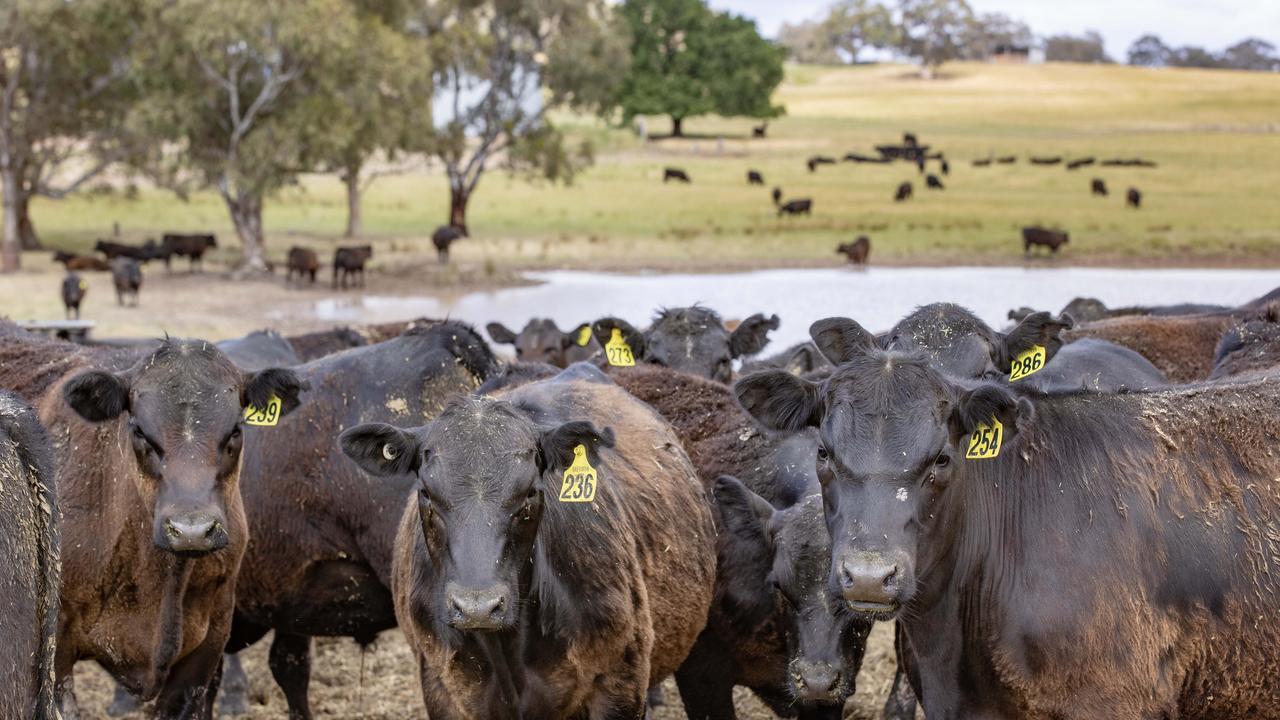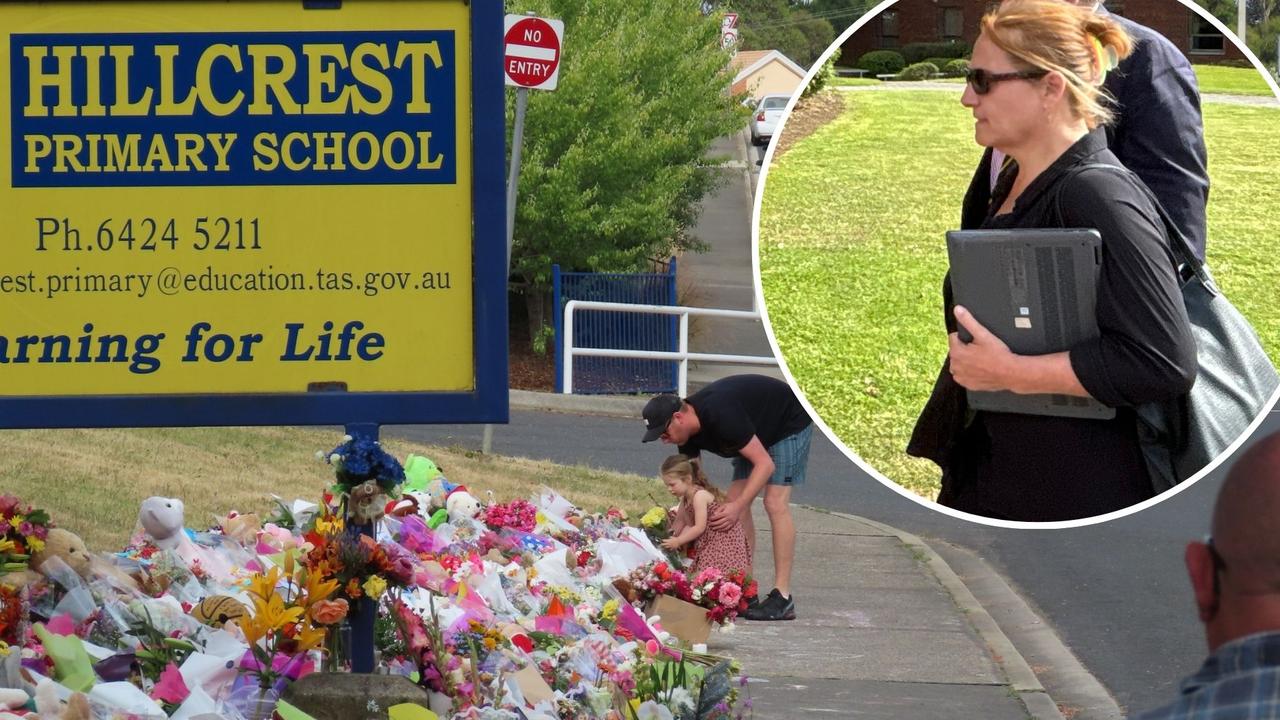Dark Mofo Union flag: Opponents call for boycotts, reform as Aboriginal support emerges
Tasmanian Aboriginal activist Michael Mansell has urged Mona to immediately reinstate the anti-colonial artwork controversially pulled after national outrage. This is why >>
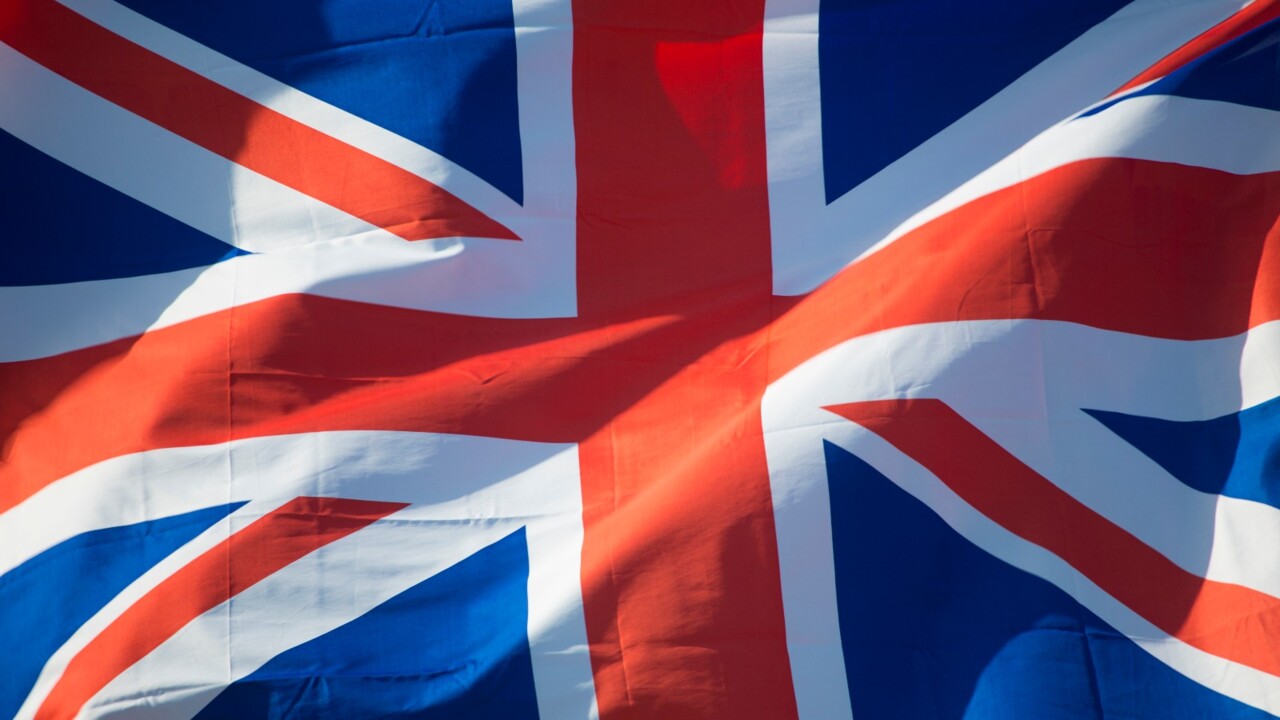
Tasmania
Don't miss out on the headlines from Tasmania. Followed categories will be added to My News.
- Unreserved apology to Aboriginal community ‘long overdue’
- Iconic festival ditches corporate sponsorship for 2021
Tasmanian Aboriginal activist Michael Mansell urges Mona to immediately reinstate censored anti-colonial artwork
IT is hard to generate public discussion about how Aborigines were dispossessed, and how much blood was spilled on the land when it all happened.
The Uluru Statement, agreed to by 13 Tasmanian Aboriginal representatives, called for truth-telling about our history. There has been little, if any, discussion in Tasmania about that hidden history. So why then, the moment an artist provokes a discussion about what really happened, is he closed down and his art not to be displayed?
Spanish artist Santiago Sierra said: “The First Nations people of Australia suffered enormously and brutally from British colonialism. Nowhere more so than in Tasmania where the Black War in the early 19th-century had a devastating impact, almost killing the entire Tasmanian Aboriginal population — an act that has since been defined as genocide.”
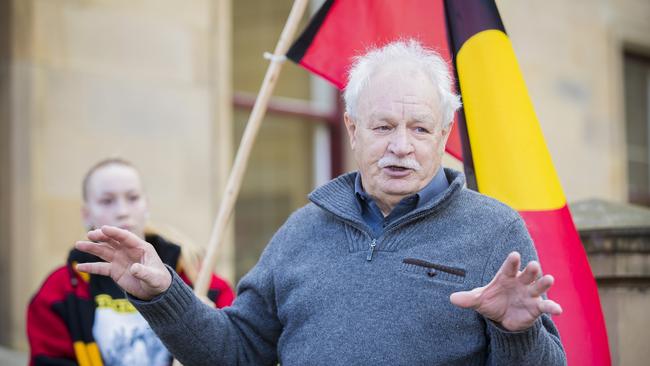
Dark Mofo has built a reputation as an outlet for artistic expression. The fact that world artists display their art at Dark Mofo speaks highly of its reputation.
Dark Mofo offers theatre for sometimes offbeat productions (like Mike Parr burying himself under Hobart’s Macquarie St in 2018) that often have a message and which gets our attention.
Sierra’s plans to soak a British flag in donated Aboriginal blood fitted the bill perfectly — it had a message about honestly understanding the past, and got plenty of attention.
The trouble was that attention got diverted from the point he was making to his form of presentation.
Critics were complaining that he should not use his planned method of blood on the Union Flag. Fine, but should the art be pulled because of that criticism?
Should artists have rules about how they present their art, or is that censorship?
After all, I am sure the artists would have accepted symbolic blood instead of real Aboriginal blood as part of his creative work.
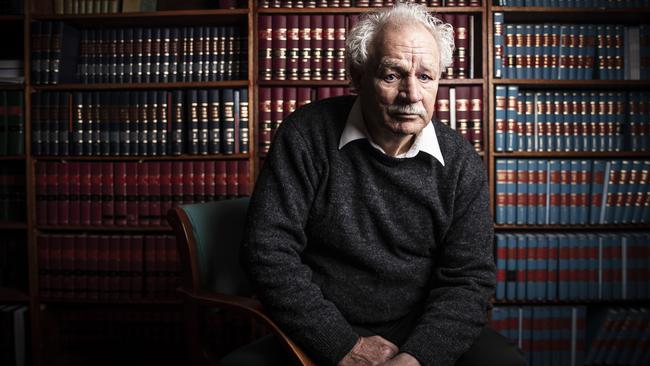
Mike Parr’s offbeat burial artform had a message — the truth of Tasmanian history is hidden beneath the surface — get it?
The more controversial the art the more likely it is to be viewed and its message considered.
Often this is the only way by which minorities get their message across. People have every right to object to art, but do they have a right to stop it being displayed?
Take British graffiti artist Banksy who painted the Little Diver on a dingy back street wall in Melbourne.
The painting, valued at about $400,000, was destroyed with silver paint. Banksy said the destruction was a free expression by other artists.
“The urge to destroy is also a creative urge.”
He tolerated the dislike of his art by others, and those others agreed he had a right to continue his grafitti (even owners of walls!).
Art is a form of expression which often promotes the free flow of ideas. The purpose of progressive art is to evoke emotions and imprint meaning into our understanding of a topic, in this case Aboriginal dispossession.
If artists use explicit imagery and we do not like it, we can always not go near it without stopping others who may want to see it.
On behalf of artist Santiago Sierra, we are looking for people to take part in Union Flag: a new artwork that will see the Union Jack immersed in the blood of its colonised territories at Dark Mofo 2021. Read more and register here: https://t.co/7pMdB6amJmpic.twitter.com/zMY6vRqNLr
— Dark Mofo (@Dark_Mofo) March 19, 2021
On principle, Dark Mofo should reinstate the exhibition.
I strongly urge them to do so. Freedom means nothing if freedom has no outlet for expression. Refusing to display art because some people do not like it denies others the choice of considering the art and its meaning. That is censorship.
Refusing to display Santiago Sierra’s art sets a dangerous precedent for future artists — will Dark Mofo reject their art if it is controversial; what standards will their art be judged by backroom censors?
I agree with the 1991 statement by the Education Association that as art educators in a free society “The free individual and the free society do not need a censor to tell what should be acceptable or unacceptable, and should not tolerate such censorship. All censorship is contrary to democratic principles.” Dark Mofo and its critics would do well to heed those words.
The real losers of the cancelled exhibition are Aboriginal people. The decision to remove the exhibition means there will not be any public debate about the topic the artwork raised.
And there goes another opportunity.
Silence about the past means leaving things in the past. No need for land rights, treaty, compensation or empowerment. Raising public awareness of the truth of the past can encourage and sometimes incite action on the ground of people’s sense of fairness.
In this case, another reason not to discuss the truth won through and people and governments can go about their business as usual without a further thought to blood and the killing fields.
Michael Mansell is chair of the Aboriginal Land Council of Tasmania and a lawyer.
‘Blak list Mona’: Opponents out for blood
Annie McCann
March 24, 10am
CALLS to boycott Dark Mofo have emerged over the now cancelled Union Flag project, but a prominent Aboriginal activist has defended the art against “shortsighted censorship”.
People weighing in on Santiago Sierra’s polarising artwork so far include Mona’s David Walsh, the Tasmanian Aboriginal Centre, Mona Foma’s Brian Ritchie, Indigenous musicians Kira Puru and Briggs and hundreds of social media users.
Aboriginal Land Council of Tasmania chairman Michael Mansell has added his voice to the complex debate over the Union Flag artwork, which was cancelled after Spanish artist Santiago Sierra’s request for First Nations peoples’ blood to soak the British flag with was deemed offensive and tone-deaf by many.
Mr Mansell has tried unsuccessfully to contact Dark Mofo creative director Leigh Carmichael to share his support for the project.
“The artist challenges Tasmanians about whether Aboriginal lands were peacefully or violently taken and uses the blood smattered Union Jack to express his view,” Mr Mansell said.
“That view must be allowed to be expressed on the ground of a free flow of ideas alone. “People have every right to disagree with the artist’s depiction of the discussion and may be offended by his methods, but they are not sound reasons to stifle the artist’s freedom of thought.
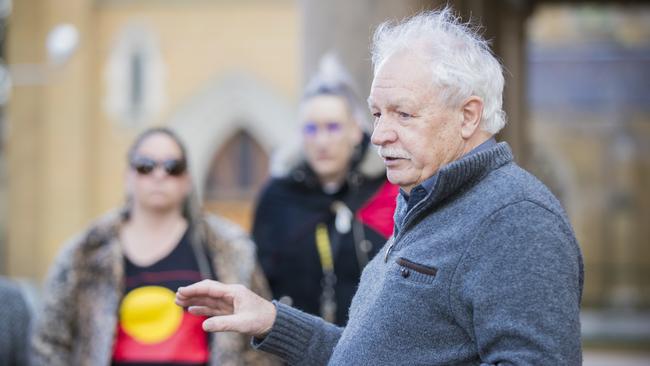
“Artists often rely on graphic and explicit imagery to provoke thought, a theme adopted in this instance by Santiago Sierra.
“Sometimes the form an artist uses offends our tastes, but tastes cannot override free speech.”
Mr Mansell likened Sierra’s message to that of artist Mike Parr, who in 2018 buried himself under Macquarie St in Hobart as an analogy for the concealment of Tasmania’s bloody, genocidal past.
“Sometimes the most bizarre forms of artistic expression make the best point,” he said.
But others are not satisfied with public apologies issued from Mr Carmichael and Walsh, with an online petition calling to “Blak List Mona” with a list of demands.
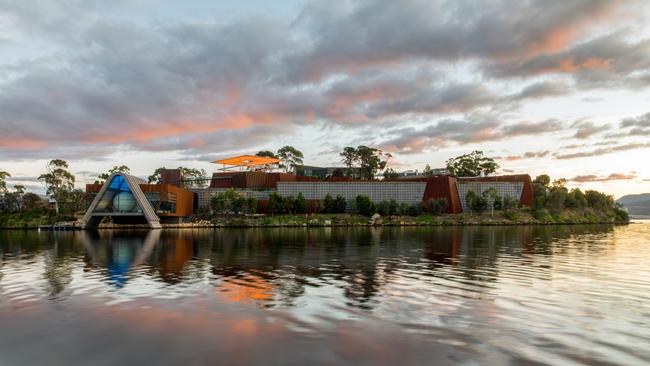
James Taylor who started the change.org petition called for a meaningful and formal apology to First Nations peoples regarding former and current controversies including a previous Mona Aboriginal DNA test project, building Mona on an Aboriginal Heritage site and Mike Parr’s 2018 artwork.
The petition recommended mandatory cultural awareness training for all Mona, Mona Foma and Dark Mofo staff, enacting a First Peoples Advisory Board and a Reconciliation Action Plan, appointing several First Peoples curators and extra funding for Tasmanian Aboriginal artworks “as reparations for the damage (the organisations) have already done”.
“Until these requirements are addressed and fulfilled by the Mona organisations, the signatories of the document will not work with the organisations in any capacity,” the petition reads.
“We hope that Mona, Dark Mofo and Mona Foma take this opportunity to learn from the past and make a positive step forward to engage with the Australian First Peoples Arts community in the future.”
The petition has achieved more than 1,360 signatures in its 1,500 goal with signatures.
Meanwhile some Facebook users have commented on Dark Mofo’s post, which apologised for and rescinded the artwork, and have asked for Leigh Carmichael to step down from the Australia Council of the Arts board and from Dark Mofo’s top role.
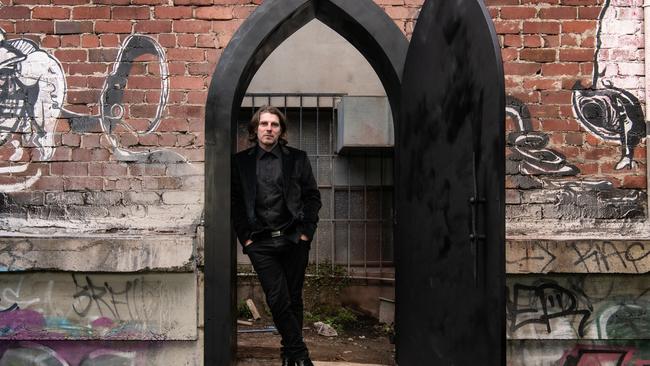
A comment from social media user Frances Butler garnering more than 140 reactions read: “Leigh, you decided to go ahead with promoting this and waited for a massive backlash to cancel simply because it’s not worth it – worth what? Your reputation?”
Commenter Zara Sullivan said the apology was “not enough”.
“Resign and step down from the Australian council for the arts. Go and listen to community. Donate any money involved to First Nations artists and communities.”
Maori musician Kira Puru commented on Dark Mofo’s Instagram apology post saying “anyone who is so out of touch as to let this project through in the first place” did not deserve to be creative director.
Tongue-in-cheek Aboriginal rapper Briggs flipped the rhetoric of asking for Indigenous peoples’ blood, commenting “(I’ve) got this project where all you non-Indigenous occupiers individually send me 15 (per cent) of your net worth”.
One Instagram account created on Tuesday named Dark No Go is calling to boycott the festival in light of the controversy.
The account has already shared nearly 30 posts featuring views on Dark Mofo from Indigenous people.

